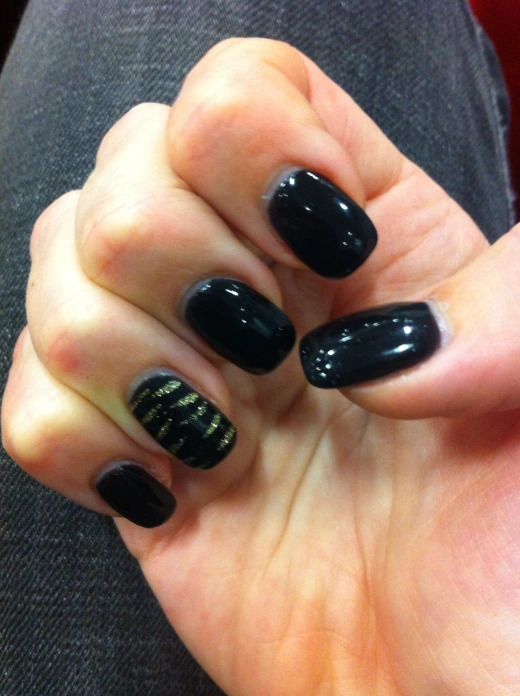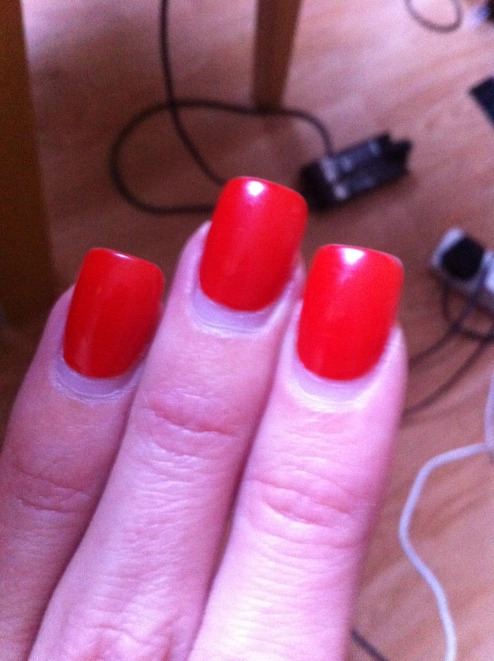Have You Tried Picking Your Nose Yet? On Navigating the City With Acrylic Nails
by Louise Rondel
7 February 2016
Originally published in our Old Blog.
In the 18 months since I’ve started occasionally paying to have a manicure, I find myself constantly checking out other women’s nails: staring enviously at the hands of the receptionist at my doctor surgery, of the young lady who works at the café, of the women in my gym with their highly-polished, beautifully-shaped, chip-free acrylic nails. However, imagining a life spent immobilised, I also approach them with some trepidation: how do they get anything done? how would I get anything done? Furthermore, the world of acrylic nails, tips, infills and soak offs is alien to me. I don’t even know how to ask for acrylics to be put on? attached? done? fitted? So it is awkwardly that I enter the salon, hold my hands splayed out in front of me and ask clumsily for ‘long false nail extensions.’




My apprehension increases when, after being ushered to a seat, the manicurist pulls out a small electronic sander and proceeds to sand away the top layer of my nails. At this point, I realise that I am now fully committed as growing out the sanded nails will take months. The process of attaching the acrylic nails (or rather of attaching the tips and then layering with acrylic, followed by more sanding, buffing and filing) is complicated, it is lengthy and, at times, it is painful. It also produces a not unpleasant smell as the powder acrylic is painted onto my nails and then sanded into shape creating clouds of chemical dust. This dust settles on mine and the manicurist’s hands, arms and clothes, coating our skin and I am relieved when I am instructed to wash my hands. Once this process is finished ‘my’ nails look dry and matt, but two layers of polish and a top coat later, they look like the shiny nails I had coveted : the sheen belying both the ‘real’ nails beneath and the work behind the polish.
I joke with two other customers getting infills that I won’t be able to do anything with my hands. One warns me about trying to pick coins up off the floor, the other about getting an Oyster Card quickly out your pocket as the bus is arriving: both things I have to try and do in the next few days. On leaving the salon, I struggle to button up my coat and getting my purse out of my bag is challenging. In fact, anything I try and do with my hands during the next couple of days is frustrating and sometimes painful. It takes several attempts to unlock my phone and I miss letters when I try to type messages on it.
After three days, I no longer notice my nails and I certainly don’t feel impeded by them, they have ‘formed part of the sensory architecture of my body’.[1] And indeed I get a good deal of pleasure out of drumming my acrylic-reinforced nails on any hard surface (literally) to hand. I have modified my body’s actions, learning to open tins and packets with knives and to type on my phone with the sides of my fingers. Except for when I type at my computer keyboard; writing this, at the new angle makes the pollicis muscles ache.
I am now committed (somewhat reluctantly) to the upkeep of these (my?) nails, every two to three weeks I need to go back into the nail salon to get infills: where the nails have grown and so need to be sanded anew and filled in with acrylic. Before this is done, my fingers begin to ache again as the weight of the acrylic stresses at the join between the fake and the real nail and I am reminded that indeed these are not my nails and of the labour (mine and the manicurist’s) of making them mine again.
The seemingly superficial process of the manicure can reveal a lot about the knowledges and the skills we use to navigate the city: skill as ‘both a social and technical dexterity’.[2] Moreover, it highlights the corporeal dimension of these knowledges and skills, we negotiate city spaces through our bodies not only as sites of display but as sites of action, shaped by and shaping our urban experiences. The manicure poses the cyborgian question: ‘why should our bodies end at the skin, or include at best other beings encapsulated by skin?’.[3] It opens the body out to the world suggesting the body as becoming, that ‘acquiring a body is a progressive enterprise that produces at once a sensory medium and a sensitive world’.[4] Thus we navigate the city; a navigation which shapes both bodies and cities and, as we feel our way, we should acknowledge that this navigation begins with our hands.
[1] Murray, C.D. (2004) ‘An interpretative phenomenological analysis of the embodiment of artificial limbs’, Disability and Rehabilitation 26:16, 963–973.
[2] Hall, S.M. (2012) City, Street and Citizen: The Measure of the Ordinary, New York and Abingdon: Routledge.
[3] Haraway, D. (1991) ‘A Cyborg Manifesto Science, Technology, and Socialist-Feminism in the Late Twentieth Century’ in Simians, Cyborgs and Women: The Reinvention of Nature, London: Free Association Books.
[4] Latour, B. (2004) ‘How to talk about the body? The normative dimension of science studies’, Body & Society 10:2–3, 205–229.
Louise Rondel is a PhD candidate in Sociology at Goldsmiths, University of London.
︎ Images by Louise Rondel.

